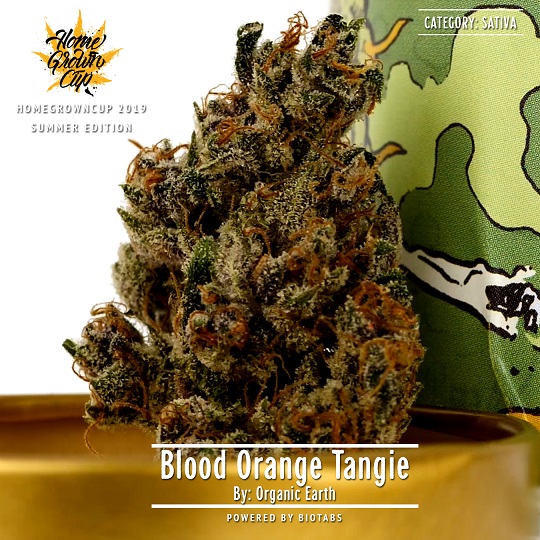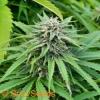Cannabis is much like any other product susceptible to hypes. Even more so since the internet and especially Instagram have come to dominate screens worldwide. In this new Suzy’s Cannabis World Blog, we delve into the history, hypes and false promises of cannabis strains.
Actually, calling them ‘strains’ is where it goes wrong first
The world 'strains' is what you use for different kind of bacteria. According to Dr. Ethan Russo:
While labeled “strains” in common parlance, this term is acceptable with respect to bacteria and viruses, but not among Plantae. Given that such factors as plant height and leaflet width do not distinguish one Cannabis plant from another and similar difficulties in defining terms in Cannabis, the only reasonable solution is to characterize them by their biochemical/pharmacological characteristics. Thus, it is best to refer to Cannabis types as chemical varieties, or “chemovars.”
And Indica, Sativa, and Hybrids?
Basically, everything is a hybrid according to the same doctor:
There are biochemically distinct strains of Cannabis, but the sativa/indica distinction as commonly applied in the lay literature is total nonsense and an exercise in futility. One cannot in any way currently guess the biochemical content of a given Cannabis plant based on its height, branching, or leaf morphology. The degree of inbreeding/hybridization is such that only a biochemical assay tells a potential consumer or scientist what is really in the plant. It is essential that future commerce allows complete and accurate cannabinoid and terpenoid profiles to be available.
The first hype: Skunk #1
Probably the first hype came around the time when Dutch hybrids were first introduced in the Amsterdam Coffeeshops. Most at the time were still selling Jamaican, Thai, Colombian and hashish when Sam the Skunkman brought the first Skunk seeds to the Netherlands. I remember a story of Wernard Bruining (who was one of the founders of the Mellow Yellow coffeeshop) bringing these Skunk varieties to the coffeeshops. While not impressed at first (“What are these weird, dense, cauliflowers like buds?”), they bought a sample and followed up quickly to buy more.
Skunk #1 would later win the 1988, and first, Amsterdam Cannabis Cup.
White Widow’s rise to fame
Not long after Skunk #1, White Widow would rise to fame thanks to a 1995 Cannabis Cup win by Greenhouse Seeds. A peculiar win. By then, Arjan (Greenhouse founder) had figured out he would arrange a free shuttle from the location of the High Times Cannabis Cup to his coffeeshops. As you could guess, Greenhouse won. White Widow rose to fame and is still found and grown in the Netherlands.
Amnesia haze
Across Europe, perhaps the most well known, seen and grown cannabis strain is Amnesia (haze). Whether you like it or not, the name sticks. And speaks to the imagination.
The generally accepted story about where haze comes from is from the Haze Brothers from Corralitos, near Santa Cruz in central California between 1970 and 1975. The Haze Brothers crossed and bred from the best Sativa strains from Colombia, Mexico, Thailand, and southern India.
Later in the Netherlands, Neville Schoenmakers started working on it and released Neville's Haze, a cross of Northern Lights # 5 and those Haze seeds. This also resulted in a shorter flowering time. Instead of 14 or more weeks to flower, crossings like these suddenly produced "Haze" species of 10 weeks or less. That is the difference between 3 or 5 harvests per year. For the large commercial grower, a very interesting thing.
Amnesia Haze is much like Neville’s Haze, Haze crossed with a different variety for a shorter flowering time, but even more popular. Amnesia Haze won the Amsterdam Cannabis Cup in 2004 and hasn’t left the coffeeshop scene ever since. We even have autoflowering Amnesia Haze seeds available now.
Gorilla Glue
Arguably the most hyped up strain next is Gorilla Glue. But for me, it does live up to the hype of being something really new and unique. The story goes that the breeder Joesy Whales had thrown away the original seeds after his first run had failed and all gave hermaphrodites, causing his harvest to fail. Fortunately, a friend of his under the name Marrdog had saved some seeds and a year later he tried again. Phenotype 4 (GG # 4) was the most appealing, after which it conquered the world in 2013 with a first place at the Cannabis Cups in Michigan and LA, as well as at the 2014 Jamaican "World Cup".
Relatively quick afterward we also saw Gorilla Glue in Europe and it would be used as a base to continue breeding with.
Zkittlez
Now the same thing is happening to Zkittlez, in part thanks to the world of cannabis marketing on Instagram. A mostly accidentally made cannabis strain that stands out from the crowd and is now being used to breed many new varieties. While it’s a hype, I too have to admit for this one it’s the real deal. If you ever get to try some real Zkittlez, I’m pretty sure you’re gonna love it.
New Suzy Seeds Aficionado Collection
We’ve had a long time to think about with Suzy whether or not to go with the hypes. Hypes are often not stable genetics and could prove difficult to grow. However, for the expert growers, we soon have something new.
Through unique connections, we’re stoked to soon finally present you our new Suzy Seeds Aficionado Collection in the spring of 2020 in addition to keeping our regular favorites of cannabis seeds. A stabilized phenotype of Tangie and winner of the Mostly Sativa category of the HomeGrown Cup 2019 Summer Edition (and runner up in 2017), Blood Orange Tangie, will be at the base of this line. Later, we also hope to bring you our new line of crosses of OG #18, a winner of the High Times Cannabis Cup in '09 and '10, as well as the Europe Champions Cup and Spannabis Indoor Hydro Cup in '10
Make sure to follow us on our social media channels if you want to be the first to know!





















